The Agony and the Ecstasy of Gatekeeping
To share or not to share?
Last summer, in a small shop on the Greek island of Paros, we were buying a button-up shirt and chatting with the cashier.
She asked how we liked the island, and we told her it was beautiful, though we’d only spent a brief moment in the touristy but charming Naousa port. It was the point of departure and return for our sailboat.
We had just finished sailing around the Little Cyclades, the tiny cluster of islands just below Paros, where the beauty is ravishing, the pace of life unhurried, and tourists are few.
“Please, don’t tell anyone,” she said. “Paros and Antiparos are already crowded. I used to live on Antiparos, and it’s not the same anymore.” She smiled politely, but her concern was palpable. “We don’t want the Little Cyclades to become like Santorini.”
Even now, I still think about what she said. She wasn’t asking for much—just for the places she loved to retain their rhythm, their soul. But in an age when everything feels instantly shareable, and in a place that depends on tourism, her words felt complicated.
What’s our responsibility to the places we love? When does sharing help these spaces thrive—and when does it harm them?
The Shift Toward Subtlety
At some point (probably during the pandemic), many of us became more cautious about how we share places we love. Instead of tagging locations outright, we started leaning into more discreet signals: a close-up of a plate, a blurred background, a cryptic caption. The scribble of If you know, you know (IYKYK).
Even now, I rarely geotag the spots I frequent. Sometimes I’ll include an understated tag camouflaged with the scenery or a discreet mention of the account’s handle, but rarely much more.
This shift felt protective, even instinctive after the pandemic. Sharing became less about showing off and more about respecting the places and people that brought us joy.
But the line between protection and gatekeeping, between generosity and discretion, is complicated.
Sharing as Capital
Today, sharing often serves as social currency. Posting about a “hidden gem” signals that you’re in the know, that you’ve uncovered something special. Phrases like “hot girls don’t gatekeep” or “I’m not one to gatekeep” have become shorthand for openness and inclusion on TikTok while also positioning the sharer as generous, worldly, and plugged in.
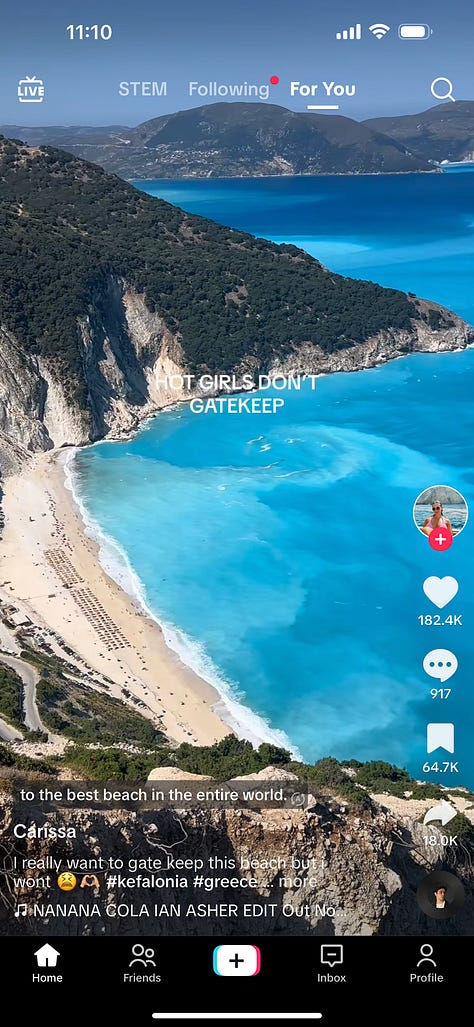


This tension—between sharing as a kind of generosity and sharing as performance—is something I confront frequently. As someone who spent years writing travel guides, I’m often asked for recommendations. And while it’s a fair question, it doesn’t always sit well with me.
I love helping people experience places I cherish. When it’s a close friend, I’ll happily share everything with abandon, tailoring recommendations to their tastes or moving around my schedule to see if we can experience these places together. This feels like a form of love and care that I am thrilled to provide.
But when it’s someone I barely know—or worse, an acquaintance asking so they can pass my list along to a coworker—it feels different.
They’re not asking because they care about the places or want to love them earnestly. They are asking because they’re afraid of “wasting” time on a subpar experience, or they want clout, to seem in-the-know to someone else. Sharing in these moments feels less like connection and more like extraction.
“I’m not one to gatekeep”
It’s one thing to ask for a recommendation quietly, via a text or direct message. But the stakes are higher when broadcasting about a place on social media.
Instagram, with its slower algorithm and smaller reach, feels safe enough. But TikTok is different. I’ve seen how a single post can bring overwhelming attention to a place. Once, I shared a video of an empty airplane, and it racked up its first 100,000 views while I slept.
The speed at which TikTok can transform a place into a viral sensation makes every post feel like a gamble, potentially putting the places we love under undue stress.
The act of sharing is rarely neutral. Restaurants, cafes, and travel destinations do benefit from being talked about. For small businesses, thoughtful exposure can bring in new customers and help them survive. It’s why there are PR-organized press trips and freebies for even nano- and micro-influencers.

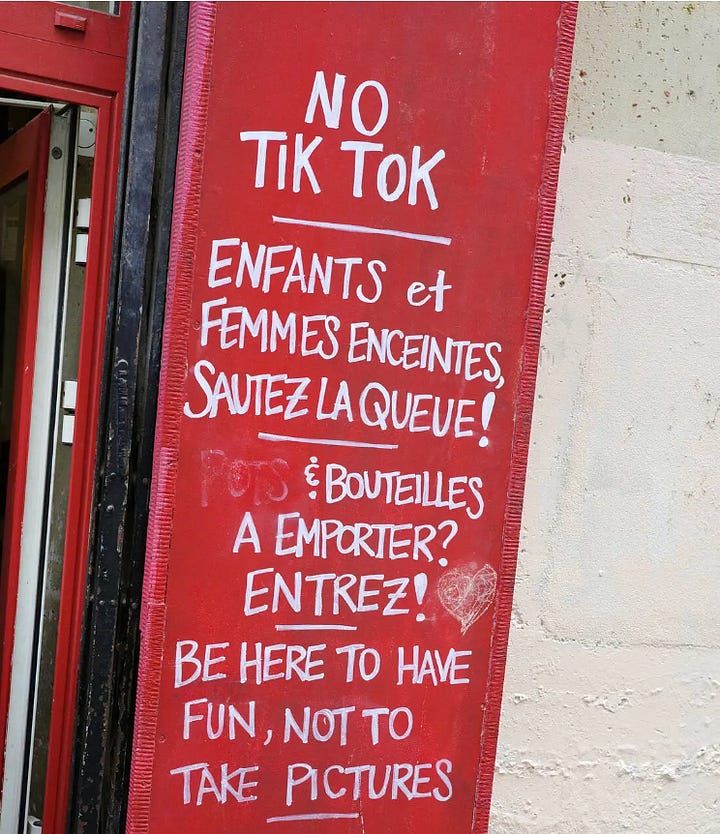
Yet there’s a fine line between helpful exposure and overwhelming attention. The magic of a place and the very careful balance of its daily operations—from staff to inventory—can quickly unravel under the weight of overnight popularity.
Take Folderol in Paris, for example. Folderol, a terrific ice cream and wine bar in the 11th arrondissement, became a victim of its own online success in late 2023. After going TikTok viral again and again, the space was overwhelmed by visitors who came more for the photo op than the experience itself. The lines were insufferable. The crowd was insufferable. People who actually wanted to pay for and eat ice cream and drink wine went elsewhere. Staff and regulars were so frustrated that they enforced a no-TikTok rule and even hired a bouncer just to preserve what made the place special in the first place.


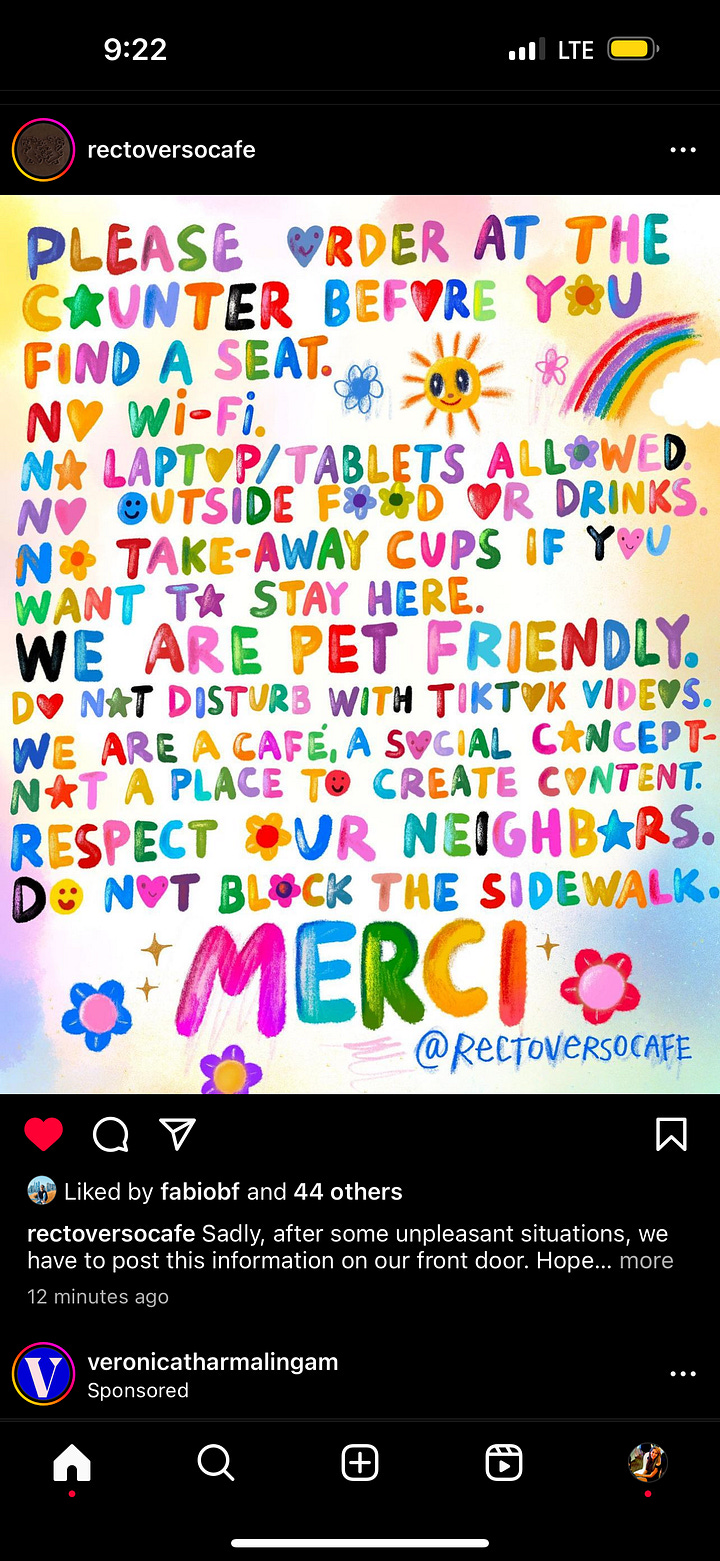

Or Recto Verso, a lovely specialty coffee shop in Paris’ Le Marais. They recently posted a “No professional photos” sign. Critics called it unwelcoming, but for regulars and for the staff’s sanity, it felt like a necessary step to keep the space from being overrun by influencers treating it like a set.
At its extreme, we can look at what’s happening in China. A friend who recently returned from a trip there described how influencers are commandeering cafes, restaurants, and even natural landscapes so they become full-blown sets. They arrive with entire crews—photographers, makeup artists, lighting rigs—turning real places into backdrops. Unasked. She showed me a video of an influencer on Yandang Mountain, dangling on a steel rope while a director shouts instructions to get the shot: “Lower your head. Move your right side. Lift your leg back.”
This is the extreme of sharing that tips into exploitation. Spaces become crowded and unpleasant. They become commodified and turned into props. And they struggle with real constraints on physical space and operational capacity, leaving staff and owners wishing for a different kind of attention.
The One Place You *HAVE* To Try
The irony is that many of my best experiences actually rarely come from big lists—not because lists and recommendations aren’t helpful, but because my favorite moments are uniquely tied to a million unrepeatable factors.
They happen when I’m fully present, when the stars align to put me in one special place at one special time with certain people. From enduring the (mostly good) friction of trial-and-error and actual exploration. The kind that comes from talking to people. From walking around until your feet hurt. From eating and eating and drinking and drinking until you find something that stands out.

On that sailing trip in Greece, for example, we dropped anchor in tiny ports too small for most tourists to reach. We bonded with the skipper we hired on Clickandboat.com as we sailed all day, washed dishes in the sea to conserve water, and relied on marine toilets. It was the most beautiful way I’ve ever experienced that country. One day, we paused on a beautiful island just before lunch, and our skipper, a Frenchman who had been living on a neighboring Greek island for the last 28 years, led us to a bakery tucked away on a back street. The buns and breads were fresh and phenomenal, stuffed with oregano-laced feta cheese. But it was made all the better by the fact that this person we cared about, who cared about us enough to share it with us, lit up with joy that we were able to visit and discuss it all together.
Or in Stockholm a few months ago, I called a wine bar I wanted to visit to see if they had space for that evening. It would unfortunately be closed for a private party but the kind man on the other end of the line told me he would text me a few of his favorite wine bars in the area where we could go instead. Five minutes later and I received a text message with his advice. We had a divine Stockholm date night. The wine was special and his recommendation was spot-on. But the gesture, the generosity, the serendipity of being in the right place at the right time made it particularly memorable and set the foundation for a wonderful night out.
These experiences are almost divine in their unrepeatability. Even if I gave you the names of these places and you were to visit yourself, it would not be the same. The magic is in the discovery, the connection, and the care.
Sharing as a Human Act
And yet, I did consider sharing both of these experiences on social media.
You can see by the length of even this essay, which is not perfect by any stretch, that this is a thought process I’m still working through and a lot more complicated than what I’ve elaborated here.
I love sharing places I adore. I believe in the power of connecting people to spaces they might never have found otherwise. But I also worry about the scale of sharing, the way social media amplifies something personal into something massive, sometimes at the expense of the places themselves.
There’s a struggle in how we exist online: how to balance generosity, preservation, exposure, commercial interests, emotional interests, and respect.
Places evolve; they grow, change, and thrive with the people who visit them. That’s part of their beauty. Keeping places “untouched” or preserving them in amber is equally fraught.
Some places even reshape themselves entirely around those new visitors. Take Morzine in the French Alps—where so many Brits vacation that it’s jokingly called the British Alps. You often hear more English than French, and there’s even a fish and chips shop. The reason? Cheap flights from London to Geneva and an easy 1h10m transfer. Over time, what was once a French ski town has taken on a new identity. Is that a loss or an evolution? It depends who you ask.
For me, the best I can do is to share thoughtfully. Sometimes that means saying no to sending someone I barely know a list, or deciding not to post. Other times, it means tailoring a suggestion with painstaking detail for someone I love and care about, making sure that what I recommend will truly resonate. Other times still, it means shouting about something I love from the rooftops, hoping it will get the ample recognition it deserves.
But every once in a while, it means trusting that the best moments are not easily planned or replicated—that they’ll unfold, unexpectedly, too.


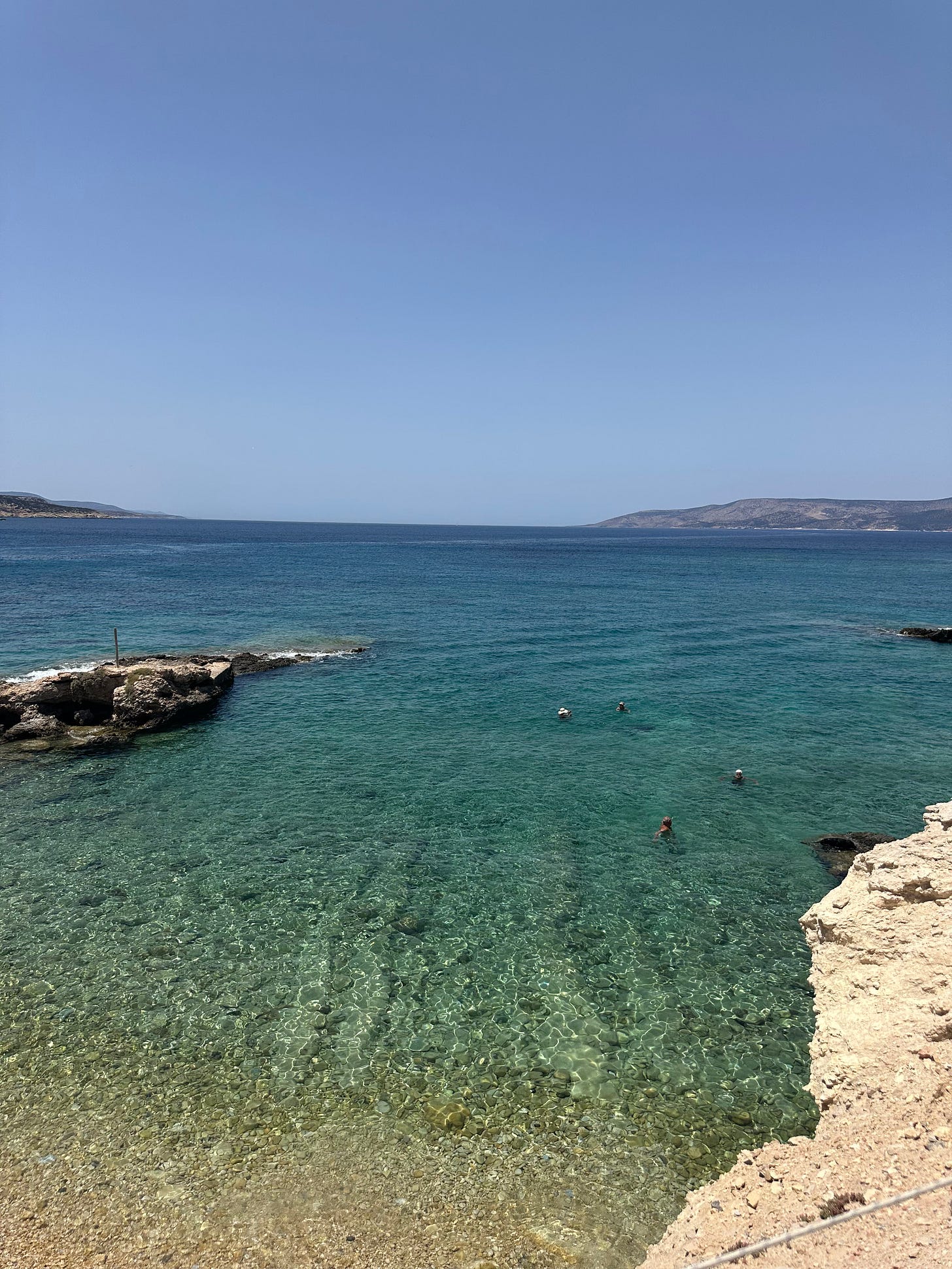
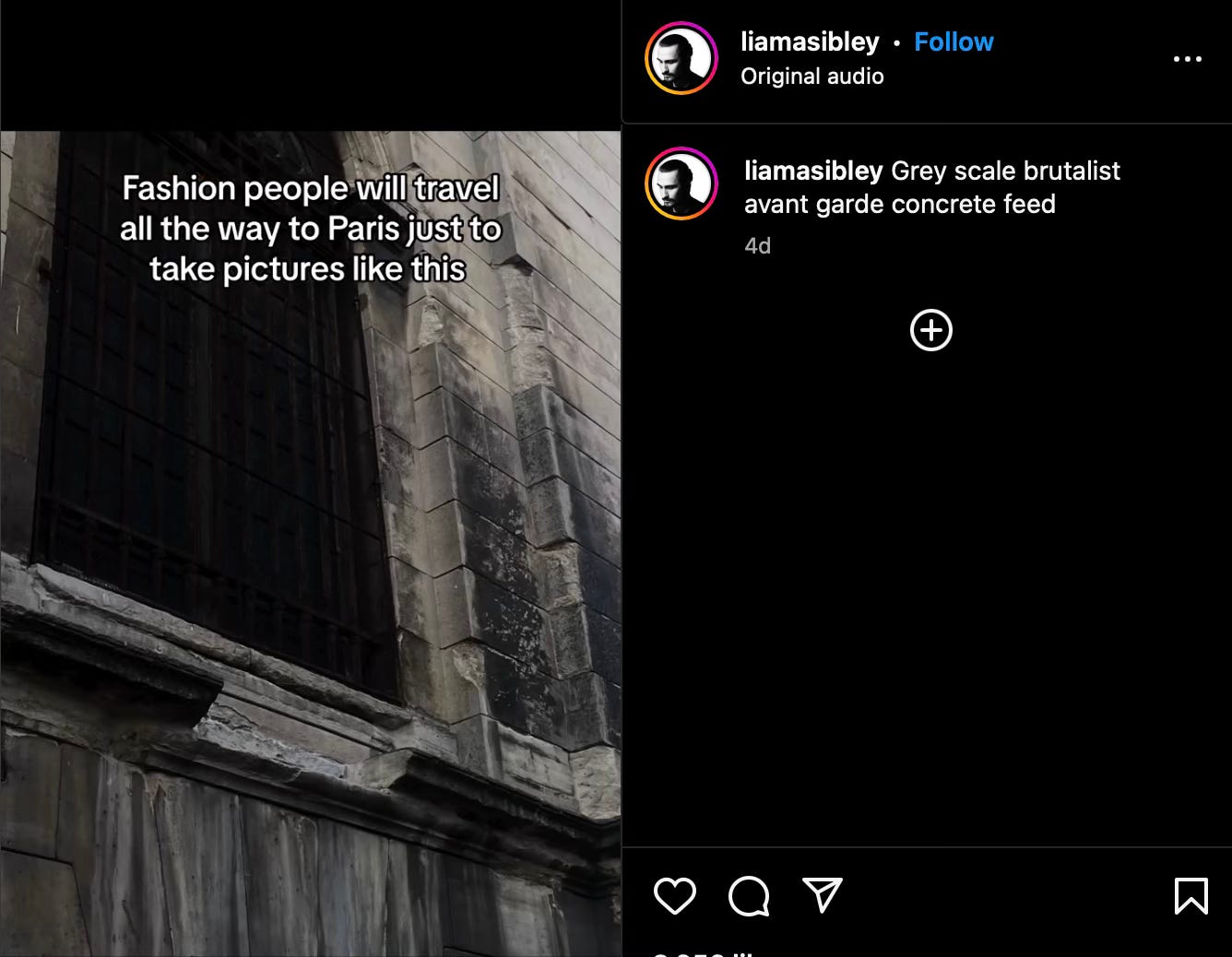


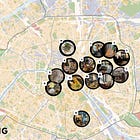


I’m glad I’m not the only one who feels this way 🙌🏾 some places discovered seem better kept for friends and family rather than risking tourists ruining it for the locals. I also agree with the part about the magic being in the connection of how you found the place. I’ve had so many moments like that and the repeated kindness of strangers gives me hope for the world
Bittersweet. This essay reminded me of something I’d read somewhere, some time ago: folks so eager to catch the perfect photograph, yet failing to appreciate being ‘present.’
Eons ago I lived at the foothills of Northern Colorado, and had longed to return, but that fancy has now faded by the rise in population and the age of social media. One thing that time cannot take away from me is the memory of being within that enclave of beauty, way, way, way back in the day.